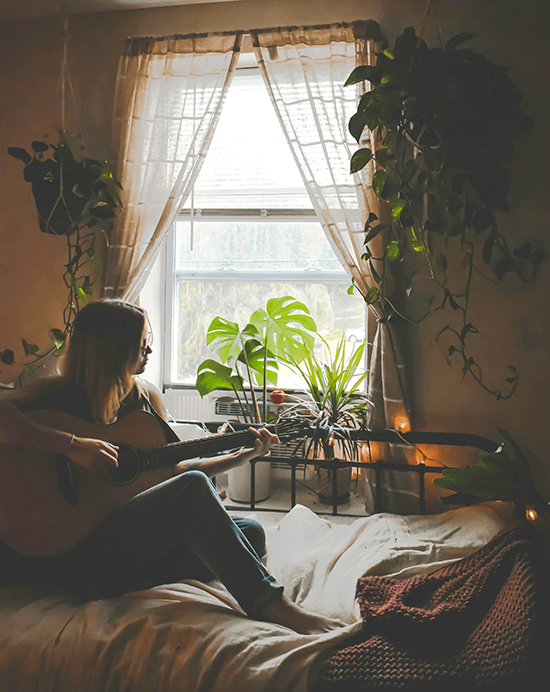Self-love. A lot of us Gen X-ers were raised to understand that it is synonymous with selfishness.
It is not.
Caring for oneself enables us to care for others and the things we care about. It enables us to be productive and healthy enough to really thrive and live.
Our environment profoundly impacts our well-being. The spaces we inhabit—our homes, offices, even our cars—reflect our inner selves and, in turn, shape our emotional landscape.

Cultivating self-love isn’t just about positive affirmations (which I also do every morning)—it’s about creating a nurturing environment that supports our mental and emotional health.
Space design offers a powerful tool for this self-care journey.
The connection between self-love and space
Our living spaces act as a physical manifestation of our inner world.
A cluttered, chaotic home often mirrors internal turmoil and stress, while a calm, organized space can foster a sense of peace and control, contributing to a more positive self-image.

Think of your space as a canvas for self-expression and self-compassion. When we consciously design our surroundings, we’re actively engaging in self-care, creating a sanctuary that nurtures our emotional well-being.
Designing a self-love sanctuary
If you are like me who is moving into a new space with high hopes of having a better quality of life, here’s where you can begin.
1. Declutter and organize: A cluttered space can lead to a cluttered mind. Regular decluttering is crucial.
Start by removing items you no longer use, need, or love. Organize the remaining items in a way that feels functional and aesthetically pleasing.
This act of clearing physical space often translates to mental clarity and a sense of accomplishment, boosting self-esteem.
2. Incorporate natural elements: Studies show that exposure to nature reduces stress and improves mood.
Bring the outdoors in by incorporating plants, natural light, and natural materials like wood and stone.
These elements create a calming and grounding atmosphere, promoting relaxation and self-acceptance.
3. Choose calming colors and textures: Color psychology plays a significant role in our emotional responses.
Opt for calming colors like soft blues, greens, and lavenders. Incorporate textures that feel soothing to the touch, such as soft fabrics, plush rugs, or smooth surfaces.
These sensory elements contribute to a sense of comfort and security, fostering self-nurturing.
4. Create a dedicated relaxation space: Designate a specific area for relaxation and self-reflection. This could be a cozy reading nook, a meditation corner, or a comfortable spot for journaling.
Make this space your personal sanctuary, a place where you can disconnect from the outside world and reconnect with yourself.
5. Personalize your space: Fill your space with items that bring you joy and reflect your personality. Surround yourself with artwork, photos, and objects that inspire you and make you feel good about yourself.
This act of self-expression reinforces your self-worth and creates a space that truly feels like “home.”
6. Maximize natural light: Natural light is essential for our physical and mental health.
Open curtains and blinds to let sunlight flood your space.
If natural light is limited, consider using full-spectrum light bulbs to mimic the effects of sunlight.
7. Incorporate sensory details: Think about all five senses. What scents, sounds, textures, and tastes make you feel good? Incorporate these elements into your space.
A calming essential oil diffuser, soft music, a comfortable blanket, or a favorite snack can all contribute to a self-loving environment.
Designing a space that nurtures self-love is an ongoing process, a journey of self-discovery and self-acceptance.
By consciously creating an environment that supports our emotional well-being, we can cultivate a stronger sense of self-worth and live a more fulfilling life.
Remember, your space is a reflection of you. Make it a beautiful one.
